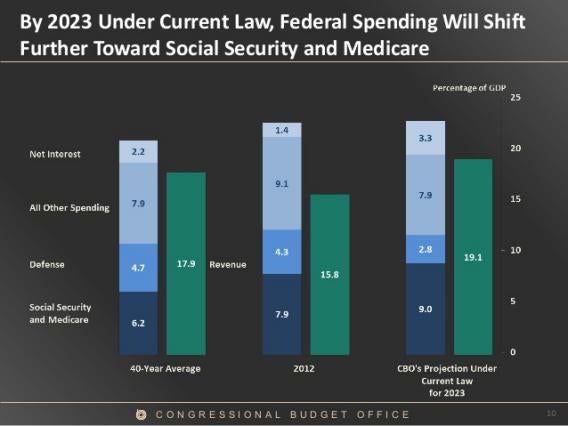I think there’s actually a law stating that a Congressional Budget Office director must at all times be making alarmist claims about the federal budget, so it’s no surprise that Doug Elmendorf’s presentation to a Harvard economics class ends with some alarmist claims. But his slides are also full of great, soothing charts. Take this one above about where we’re headed over the next 10 years.
As you can see, we’re set for a large increase in spending on the elderly and a substantial increase in spending on debt service. But this isn’t going to crowd out the government’s other domestic functions. It’s going to lead to slightly higher taxes, and the risk that the Department of Defense will be unable to defend the American people against a cross-border invasion from Canada (I kid, I kid). Obviously the Department of Defense’s actual activities are totally unrelated to the defense of the United States or its population—it’s all about being a Global Force for Good these days.
But this is the thing that keeps not getting focused on in budgetary debates. Conservatives are very agitated about “spending” and progressives are very agitated about “austerity,” but one of the biggest sources of short-term and medium-term austerity in the pipeline comes from reduced military spending. That’s an issue we should debate in strategic terms outside the Moneybox portfolio, but one’s strategic views also ought to inform one’s budgetary views. If the sequestration cuts to the Pentagon budget are really harming national security, then it’s truly perverse of Republicans to be so opposed to a tax component to sequester repeal. But if they aren’t harming national security, then that ought to have some larger consequences for how we think about this.
